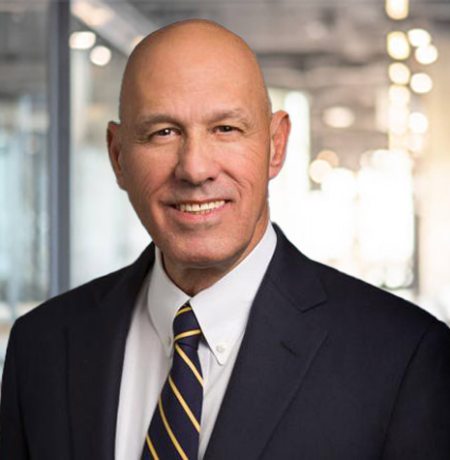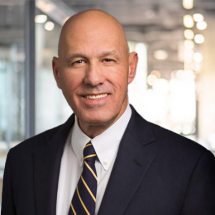In my conversations with senior executives at healthcare organizations around the country, I find that leaders have three critical topics on their minds: workforce, workforce, and workforce.
And no wonder.
Between May and September of this year, 20 million Americans voluntarily left their jobs, in what has been called The Great Resignation. That number has risen each month, culminating—so far—with 4.4 million resignations in September, or 3% of the total workforce.
Over that five-month period, 2.6 million of those resignations came in what the Bureau of Labor Statistics calls the “healthcare and social assistance” category. Resignations in the healthcare sector increased 3.9% over the previous year, second only to the tech sector, according to a study published in the Harvard Business Review. That study concluded that resignations were higher in fields where employees were most susceptible to burnout from “extreme increases in demand due to the pandemic.”
As challenging as the resignation situation is, it is only one part of the workforce upheaval catalyzed by the pandemic.
One high-profile issue is work setting. A Gallup study found that 69% of workers were remote in May of 2020, during the thick of the pandemic, and that percentage has been hovering between 45% and 50% over the past year for all employees and around 69% for white-collar workers.
Feelings about remote versus in-person work are very strong. On Wall Street, for example, Goldman Sachs CEO David Solomon said in February that working from home is “an aberration that we’re going to correct as soon as possible.” Morgan Stanley CEO James Gorman said, “If you want to get paid New York rates, you work in New York.” And JPMorgan Chase CEO Jamie Dimon said, “Oh, yes, people don’t like commuting, but so what?” In contrast, Jefferies Financial Group CEO Richard Handler said, “Our people did not spend the day streaming movies, commiserating about the pain of life in isolation or hiding in any way from their obligations. They worked harder and more effectively than at any time in our firm’s history.”
The ability to work remotely has proven to be a huge factor not only in job satisfaction, but in willingness of people to continue at their current jobs. More than 90% of U.S. workers surveyed by Gallup said that they hope to continue working remotely to some degree after the pandemic. Equally important, almost one-third of employees surveyed said they are “extremely likely to seek another job if their company eliminates remote work.”
I would suggest an important way to tackle the highly charged and highly complex workforce problem is to view it as a matter of segmentation.
For example, not all workers have the luxury of working remotely. As of May 2021, less than one-quarter of healthcare providers and support staff were working remotely, compared with three-quarters of workers in what the BLS calls “professional and related” occupations. The segmentation issue is, of course, much broader and deeper than remote work. An additional 1.4 million mothers with school-age children found themselves forced to leave the paid workforce during the pandemic, due to lack of in-person school and childcare, according to the U.S. Census Bureau.
Social inequities that COVID laid bare were highly apparent in workforce effects. At the outset of the pandemic, unemployment rates, which spiked for all workers, were significantly higher for Black men, Black women, and White women than they were for White men. Black workers who were able to maintain their employment were far less likely than White workers to have the luxury of doing their jobs remotely, because Black workers make up a disproportionate share of front-line workers, including in healthcare. As a result, Blacks have had greater exposure to the health risks of COVID in the workplace than have Whites.
Like its effects, any solution to the workforce problem needs to focus on segmentation.
In the world of human resources, the default setting—in no small part for valid compliance reasons—is to generally apply the same policies to workers across the board. However, the current workforce crisis has emphasized that any workforce, especially a healthcare workforce, has many subtly different segments of people and jobs, and each segment reacts differently to the social, economic, cultural, and working environment.
The job of human resources in large, diverse organization is inherently complex. And managing the immediate problems of turnover and workforce shortages has made that job immeasurably harder. Unfortunately, addressing the causes of the Great Resignation, with its multi-segment dimensions, will be harder still.
Healthcare organizations will have to identify the relevant worker segments. They will have to figure out what people in each segment need and value, and what makes a job attractive. For example, what do the women in your workforce want? What causes women in your area to take jobs, and what causes them to stay? What do you have to do related to compensation, childcare, flexibility of hours, education support, and paths to advancement? What would a similar analysis show for environmental services workers? For food service workers? For nurses? For physicians?
With organizations already stretched thin, this sort of deep and sophisticated analysis will be extremely challenging, to say the least. Equally challenging will be deciding on and taking action.
Over-analysis is always a danger in large organizations, as is unwillingness to take bold action in areas as sensitive as workforce. If anything, healthcare organizations tend to be more cautious than other organizations, and for good reason, given the role they play in people’s lives both as care providers and large employers.
However, one of the hallmarks of the COVID period has been rapid socioeconomic and cultural change. The Great Resignation has emerged quickly and is escalating. In the absence of rapid action, organizations run a risk of significant damage to their market positions and even their ability to carry out core services. The actions themselves will need to be bold and creative, and will need to go to the heart of the most critical needs of the most challenged workforce segments.
A recent move by Advocate Aurora Health offers one example of targeted and bold action to fortify the workforce and make a social impact.
Advocate Aurora, which is one of the largest not-for-profit employers in Illinois and Wisconsin, recently announced that it will raise its minimum hourly wage to $18 beginning Dec. 5. The increase will affect 10,800 employees, including those in food service and environmental services positions. An additional 20,000 employees who already make more than $18 an hour, including pharmacy technicians and licensed practical nurses, will also receive raises. The pay increase will cost Advocate Aurora $93 million in the first year.
Why was Advocate Aurora willing to make this investment? In part, it was a workforce issue: the organization wanted to reward valuable work and position itself as a desirable employer. However, it was also a social justice issue. As the organization said in its press release, the investment is intended to “create social impact that dramatically improves individuals’ health and well-being.” Many of the people holding these positions are members of racial and other groups that have historically been economically disadvantaged. These groups need more money, and Advocate Aurora’s investment was a step in that direction.
And why could Advocate Aurora make this investment? Not only because of decisive leadership, but also because it is a large organization with an excellent balance sheet. As with so many other organizational challenges and opportunities, scale and astute financial management pave the way to solutions and innovation.
Ultimately, the organizations that succeed in hiring and retention will be the ones that do not view their workforces as a single homogenized group. Successful organizations will dig deep. They will identify key segments. They will hold focus groups on those segments. They will determine what it is that really makes a good job for very different people in their organizations. And then they will respond by delivering tailored changes that are creative, contemporary, and meaningful.










